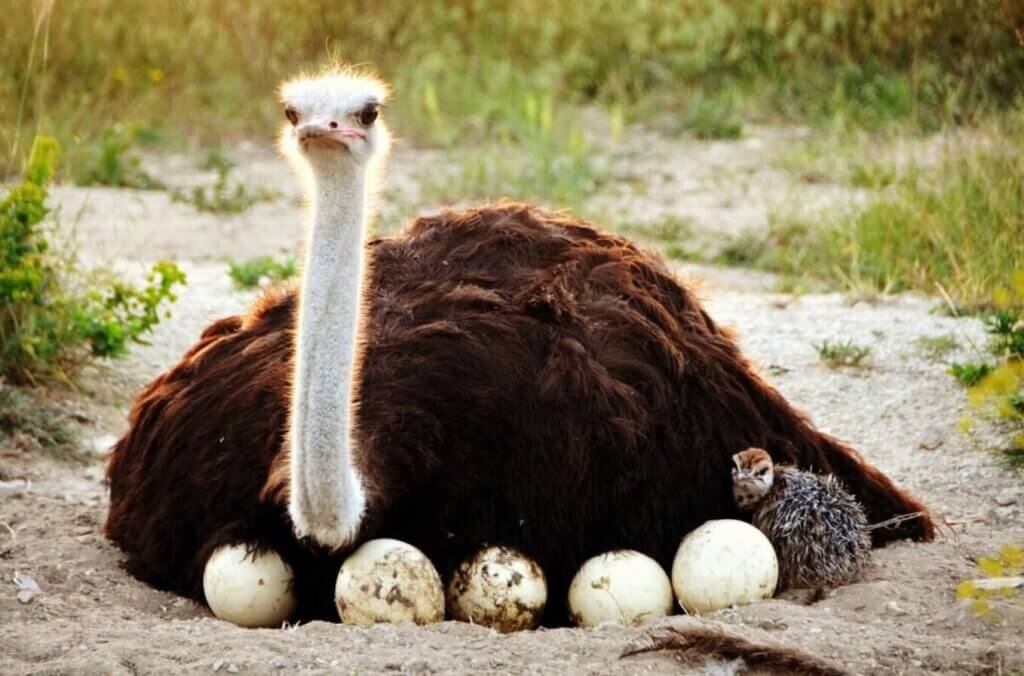Ostriches have a small head with a straight beak and big eyes that have long lashes. They are birds, but their wings are not well developed, so they cannot fly. However, they make up for it with their strong legs. Ancient Africans used their eggshells to carry water.
People also admired their beautiful feathers. These feathers cover almost the entire body of the bird. Male ostriches usually have black feathers, except for their wings and tail, which are white. Females have slightly different colors, gray-brown, and their wings and tail are grayish-white.
In the past, people made tools, fans, and decorated ladies’ hats from these feathers. Because of this, ostriches were almost extinct 200 years ago until they started being kept on farms.
Their eggs, as well as the eggs of other birds, are eaten and used to make various products from the shell. The meat is consumed and it resembles beef, while the fat is added to cosmetics. The down and feathers are still used as decorations.
Fortunately, these friendly exotic birds are not rare now.
10 interesting facts about ostriches.
1. They don’t bury their heads in the sand
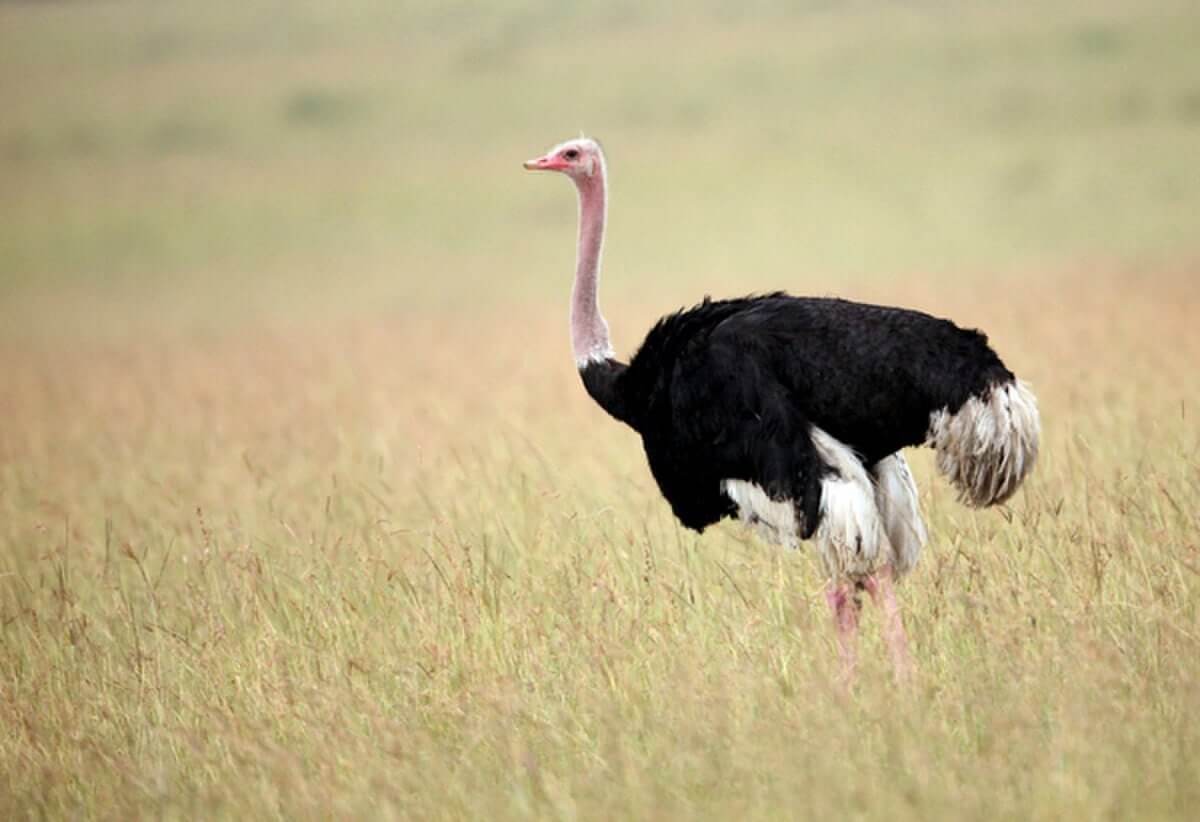
The thinker Pliny the Elder was convinced that when they see a predator, ostriches hide their heads in the sand. He believed that then these birds seem to be completely hidden. But that’s not true.
Ostriches lower their heads to the ground when they swallow sand or gravel, sometimes picking up these solid pebbles from the ground that they need for digestion.
A bird that has been chased for a long time may put its head on the sand because it does not have the strength to lift it. When a female ostrich sits on the nest to wait out the danger, she can spread out, tilt her neck and head to become unnoticed. But if a predator approaches her, she will jump up and run away.
2. During the run, they move with huge jumps
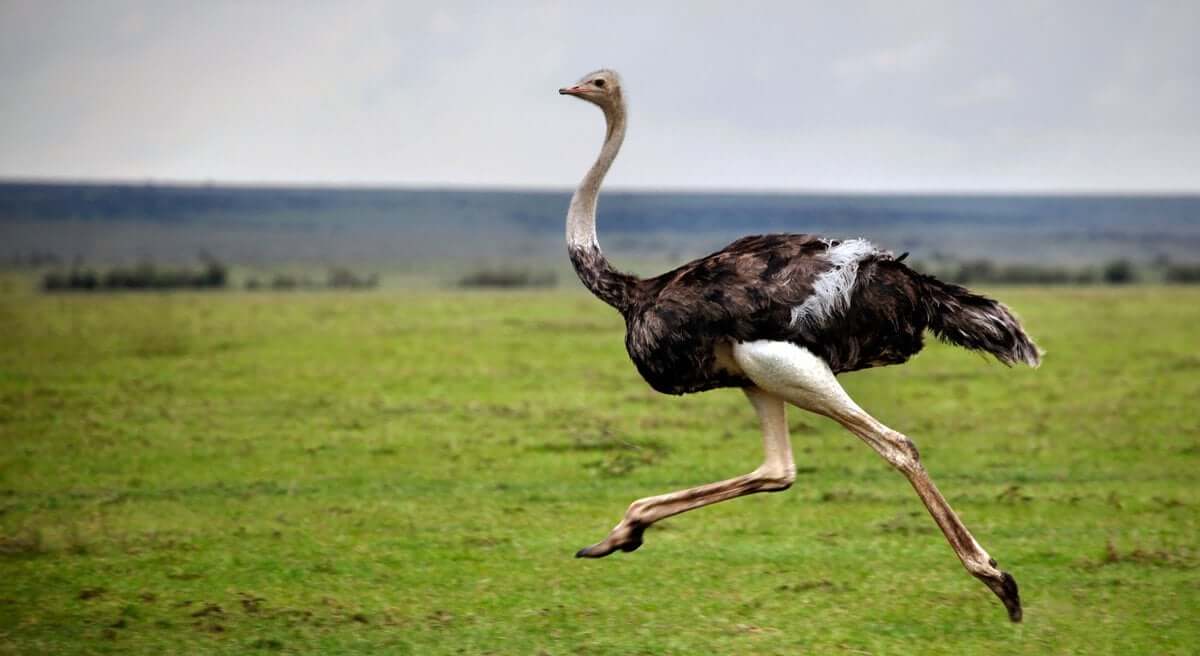
They move across the terrain with huge jumps, and can cover a distance of 3 to 5 meters with one jump.
3. Develop a huge speed of up to 100 km / h
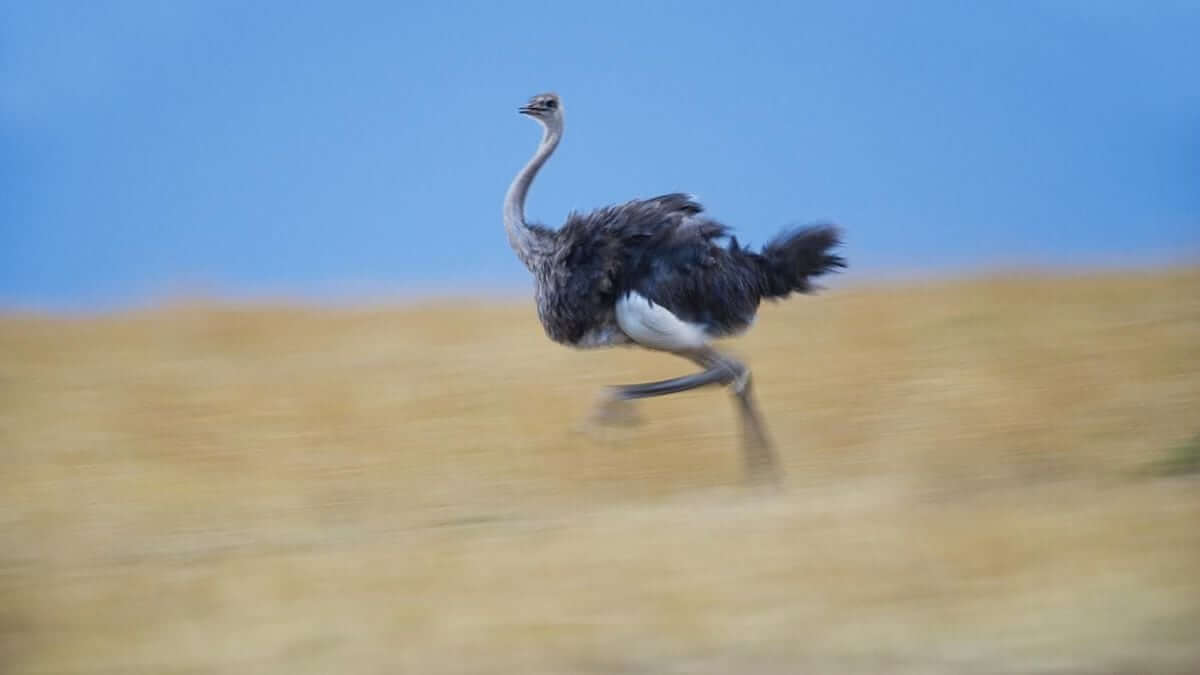
Legs are the only defense of this bird against enemies, because when they see them, ostriches run. Even young ostriches can move at speeds up to 50 km/h, while adult individuals move even faster – 60-70 km/h and higher. They can maintain a running speed of up to 50 km/h for a long time.
4. Do not have close relatives among other creatures
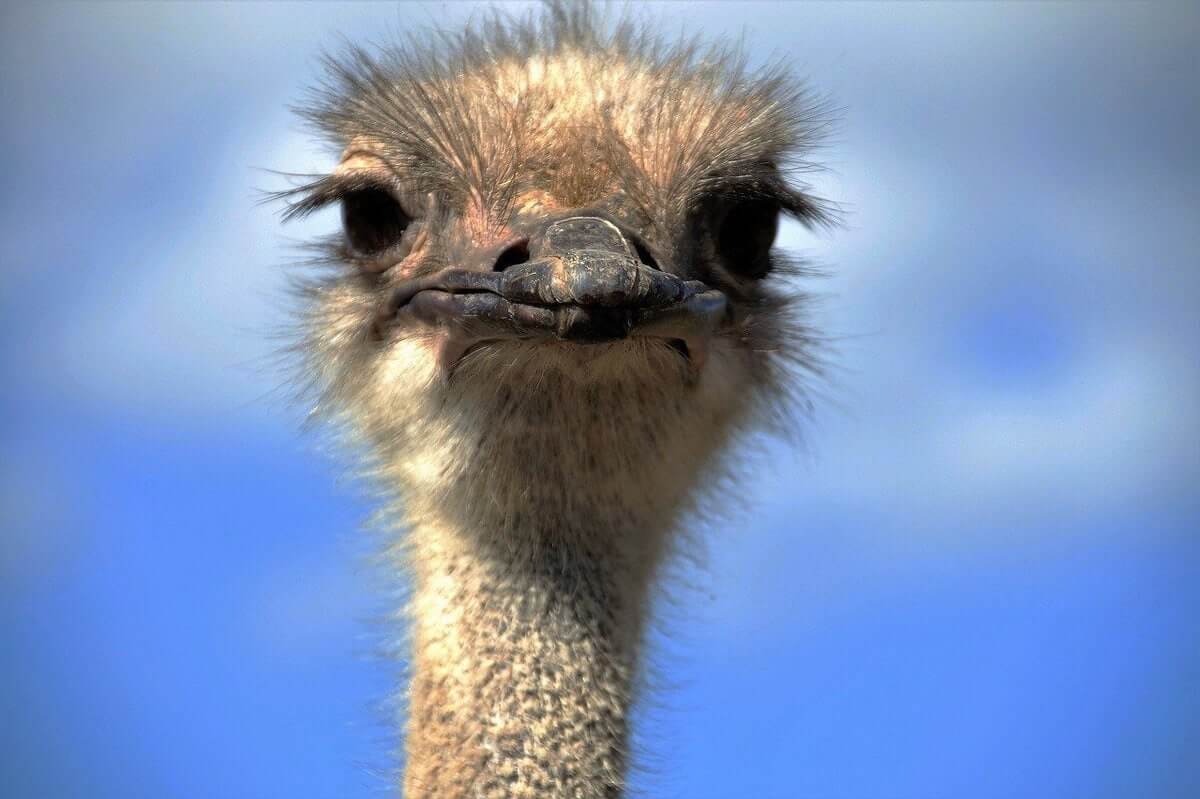
The ostrich is the only representative of the flightless bird squad. It can be said that ostriches have no close relatives.
Flightless birds also include cassowaries, such as emus, kiwi-like birds, such as kiwis, rhea-like birds, such as rheas, tinamou-like birds, such as tinamous, and several extinct squads. It can be said that these birds are distant relatives of ostriches.
5. Young birds eat only meat and insects
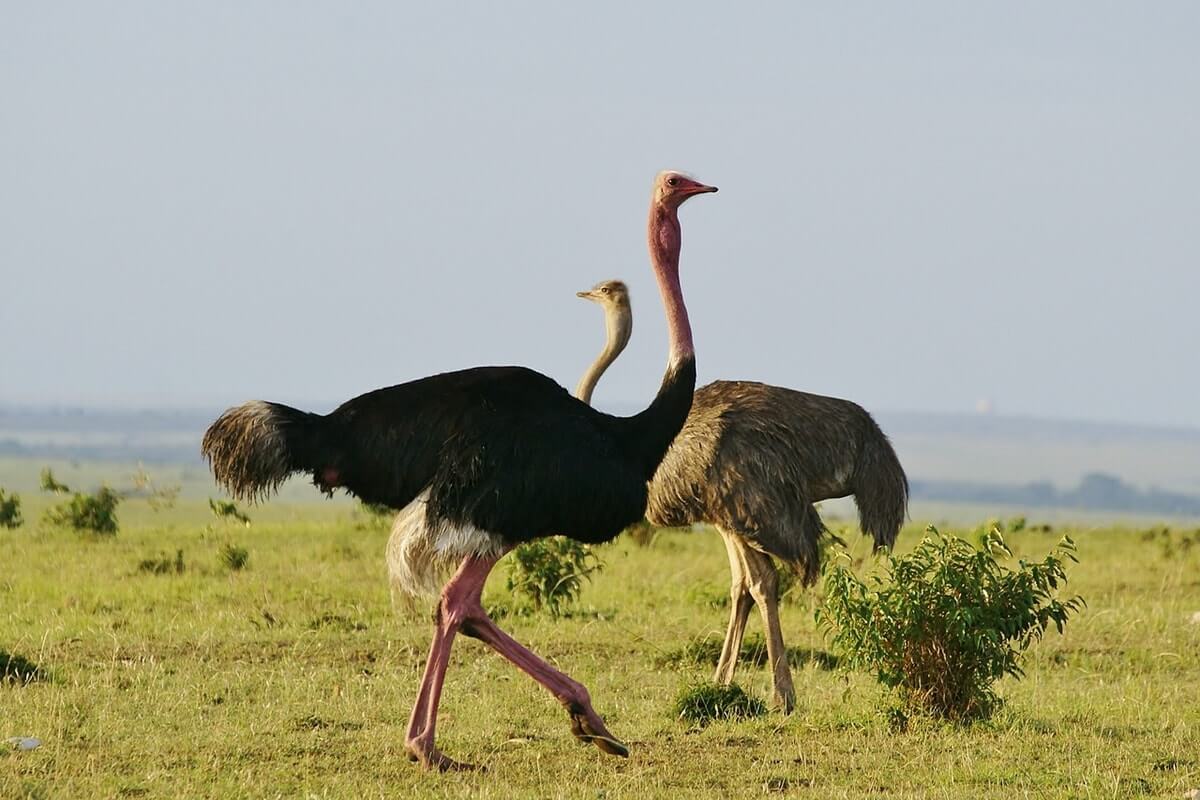
Ostriches are omnivorous animals. They feed on grass, fruits, and leaves. They prefer to gather food from the ground rather than plucking it from tree branches. They also like insects, any small creatures, including turtles, lizards, i.e. anything they can swallow and catch.
They never crush their prey, but swallow it whole. In order to survive, birds are forced to move from place to place in search of food. However, they can live for several days without food and water.
If there are no bodies of water nearby, they have enough liquid from plants. However, they prefer to make their habitats near bodies of water, where they willingly drink water and bathe.
To digest food, they need stones that ostriches swallow with pleasure. In the stomach of one bird, up to 1 kg of pebbles can accumulate.
And young ostriches prefer to eat only insects or small animals, refusing plant food.
6. Two types African and Brazilian
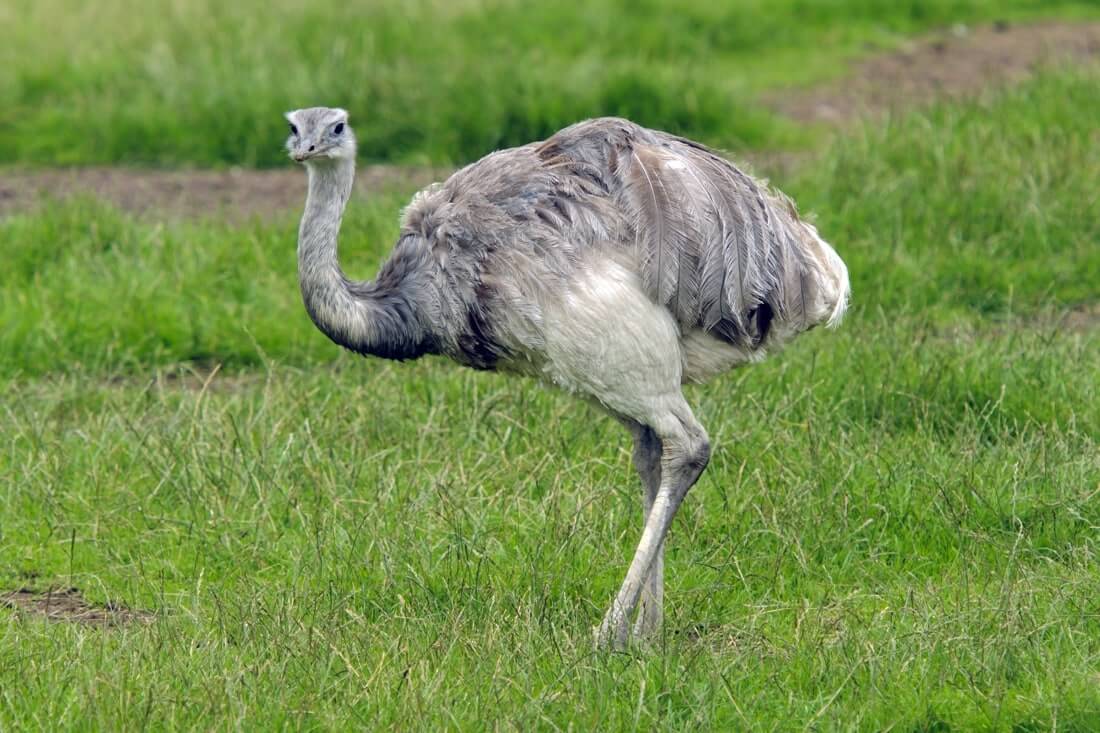
For a long time, not only African birds that live on this continent were considered ostriches, but also rheas. This so-called Brazilian ostrich is similar to the African ostrich and is now classified as a member of the order Rheiformes. Despite the similarity between the birds, there are also significant differences between them.
Firstly, rheas are considerably smaller: even the largest rhea grows up to a maximum of 1.4 m. The neck of an ostrich is bare, while the neck of a rhea is covered in feathers. Ostriches have 2 toes on their feet, while rheas have 3. The call of a rhea does not resemble a bird’s call; it is more like the roar of a predator and sounds like “nan-du,” which is how it got its name. They can be found not only in Brazil but also in Argentina, Bolivia, Chile, and Paraguay.
Rheas also prefer to live in herds, which can range from 5 to 30 individuals. The herd includes males, chicks, and females. They can form mixed herds with deer, vicuñas, guanacos, and in rare cases, with cows and sheep.
7. Residence territory is Africa
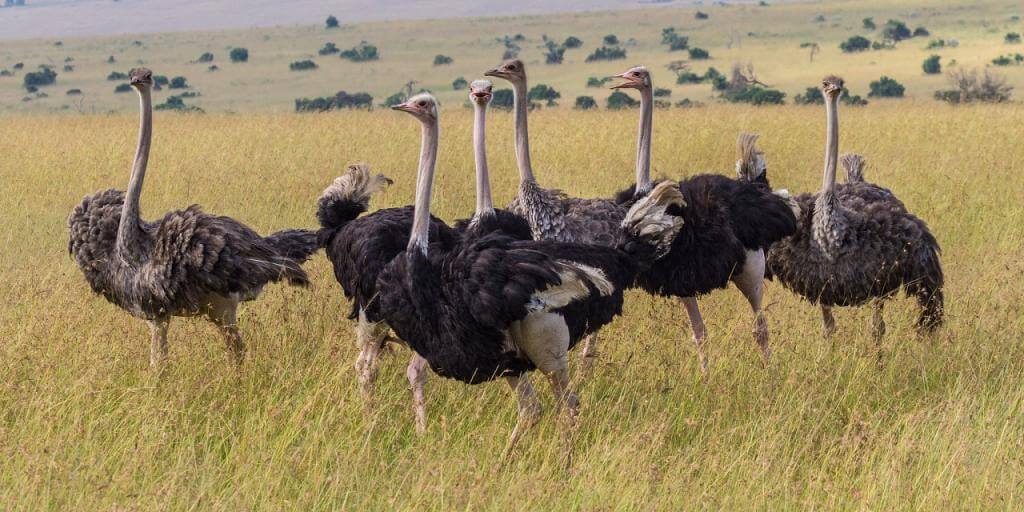
Ostriches have long been domesticated, they are bred on farms, so these birds can be found all over the world. But wild ostriches only live in Africa.
Once they were found in Central Asia, the Middle East, Iran, India, occupying larger territories. But due to constant hunting, they were simply exterminated in other places, even the numerous Middle Eastern species.
Ostriches can be found practically all over the continent, except for the Sahara Desert and the northern part of the continent. They feel especially good in reserves where hunting birds is prohibited.
8. Flock birds
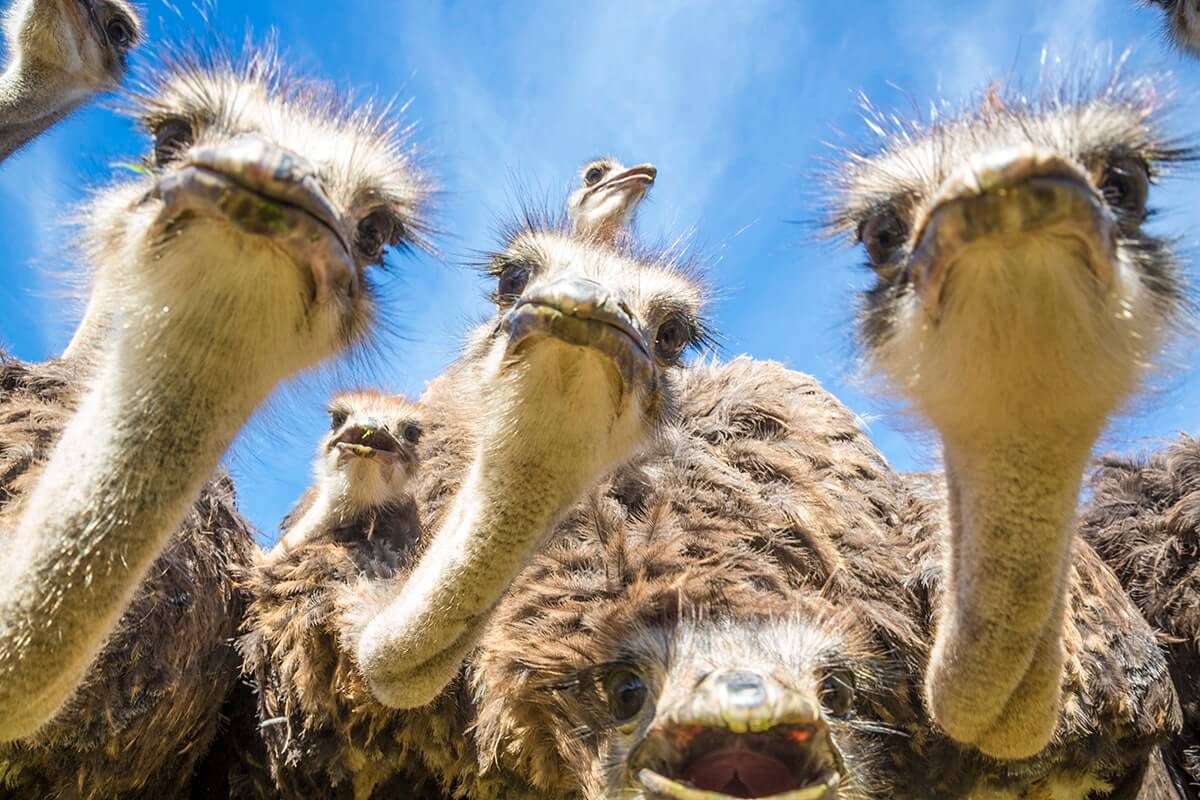
They live in small families. They usually consist of one adult male and four to five females of different ages. But sometimes, in rare cases, a flock can have up to fifty birds. It is not a permanent flock, but everything in it is subject to strict hierarchy. If it is a high-ranking ostrich, its neck and tail are always positioned vertically, while weakened individuals prefer to hold their heads tilted.
Ostriches can be seen next to groups of antelopes and zebras. If they need to cross the African plains, they prefer to stay close to them. Zebras and other animals do not mind such proximity. Ostriches warn them in advance of any danger.
During feeding, they often scan their surroundings. They have excellent vision and can spot a moving object from a distance of 1 km. As soon as an ostrich notices a predator, it starts running, followed by other animals that are not as vigilant.
9. The name translates as “camel sparrow”
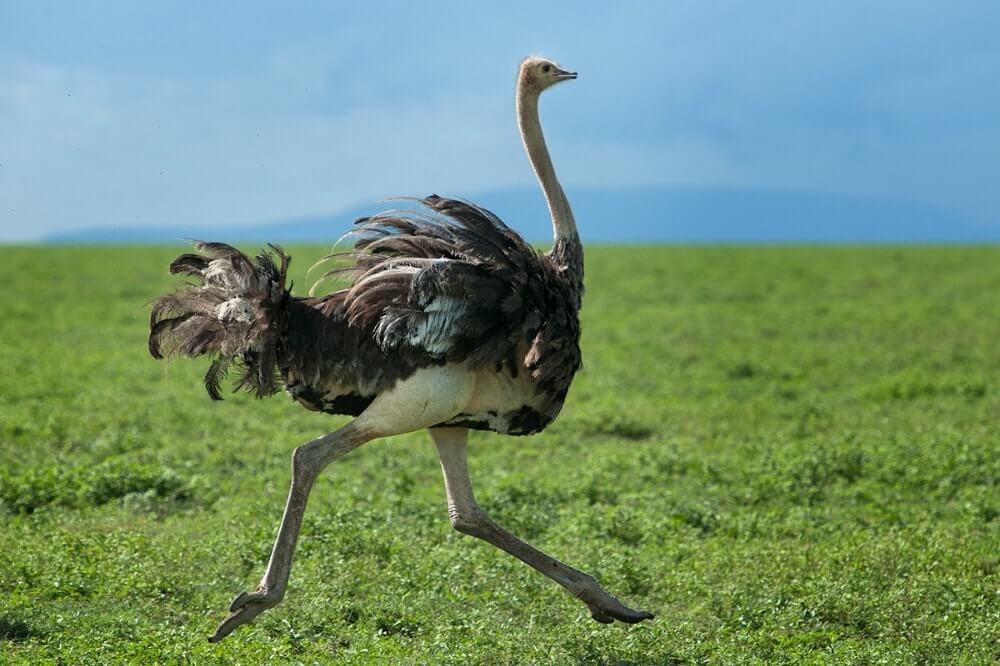
The word “straus” came to us from the German language, Strauss appeared from the Greek “strouthos” or “strufos”. It was translated as “bird” or “sparrow”. The phrase “strufos megas” meant “big bird” and referred to ostriches.
Another Greek name for it is “strufokamelos”, which can be translated as “bird-camel” or “sparrow-camel”. At first, this Greek word became Latin “strucio”, then entered the German language as “strauss”, and later reached us as the familiar “ostrich”.
10. The largest bird in the world
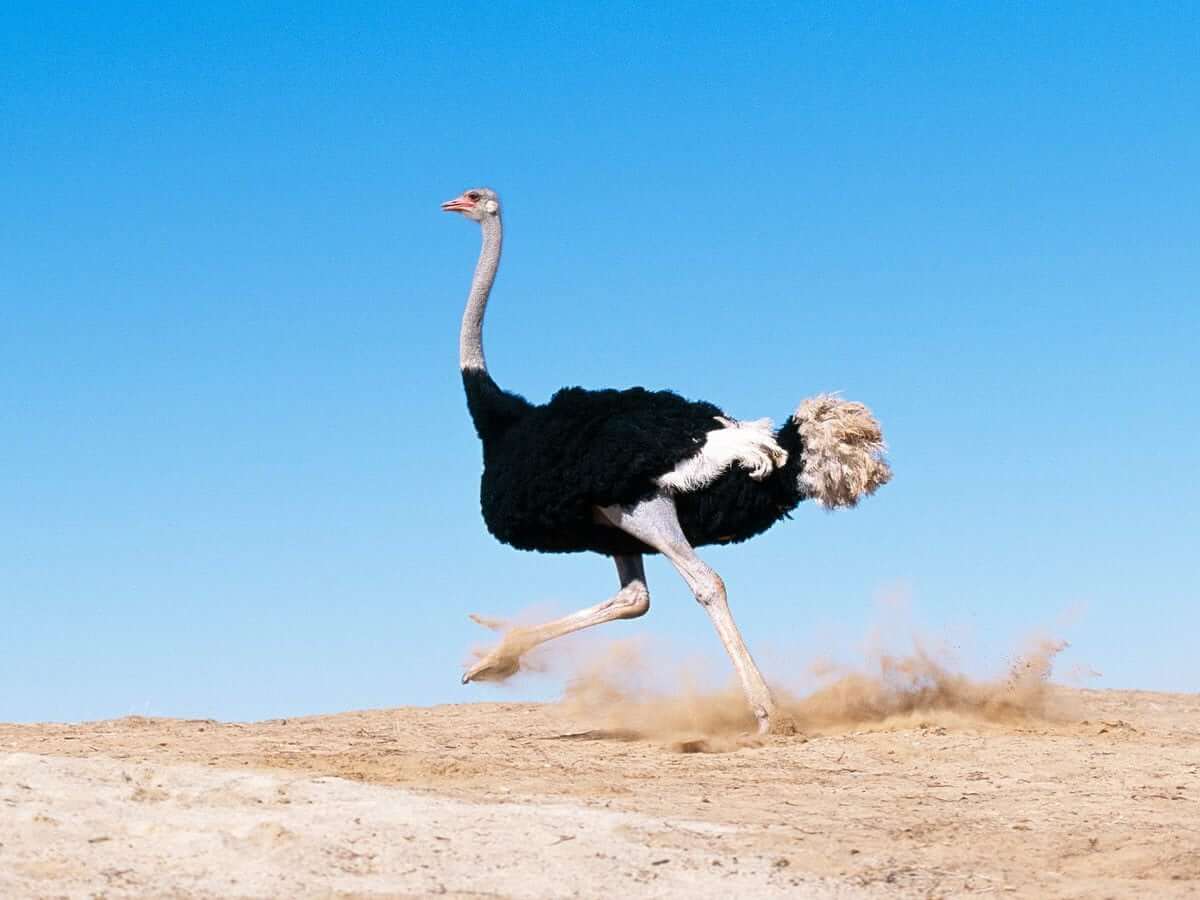
The African ostrich is called the largest bird because it grows up to 2.7 meters tall and weighs 156 kg. They inhabit Africa. Once they could be found in Asia as well. But despite such enormous size, this bird has a small head and a tiny brain, not exceeding the diameter of a walnut.
Their legs are their main asset. They are adapted for running, as they have powerful muscles and two toes, one of which resembles a sole. They prefer open areas, avoiding thickets, swamps, and deserts with shifting sands, as they would not be able to run quickly there.
